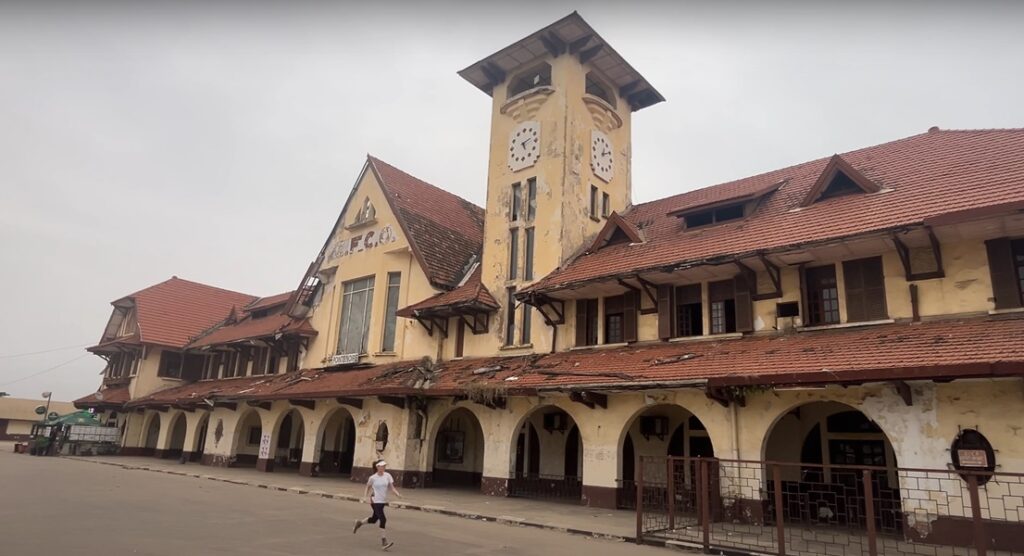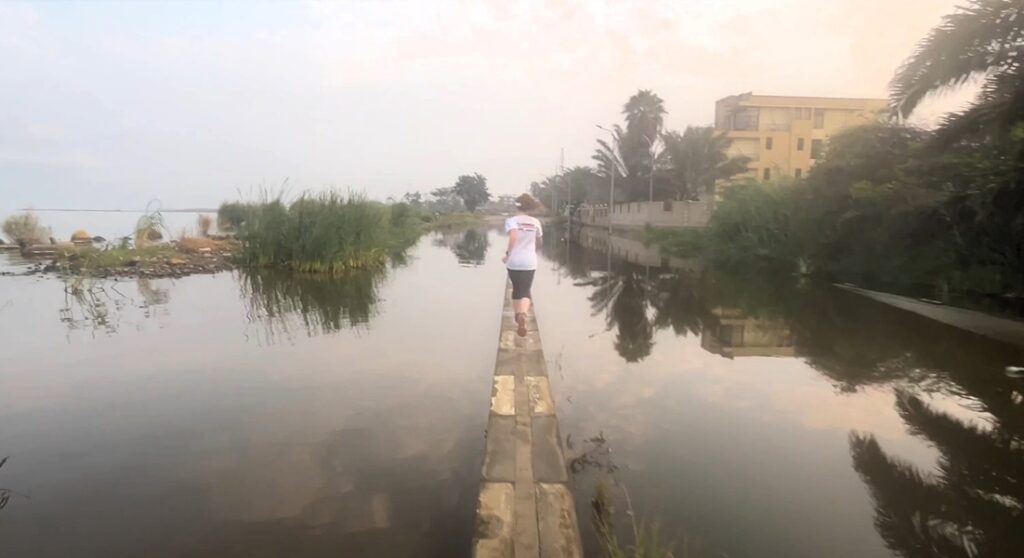Parque del Este, Caracas. May 2024.
We ran in Caracas’s Parque del Este “running belt”, enjoying its heterogeneus attractions: a boat lake, a Xerofítico and a Hidrofítico garden, a water curtain or the corvette used by Francisco de Miranda during his first expedition to Venezuela. All while outside the city streets were chaotic, loud and polluted.
TLDR; “too long, didn’t read”
- I just want to run! Take me to RUN.
- I have 1 minute. Take me to USEFUL INFORMATION.
- Running is my excuse for travelling. Take me to TRIP.
- Running is my excuse for eating. Take me to CARBOLOADING.
- I want to know what to read in the plane. Take me to ONE BOOK.
🌍 The trip 📷: what to see in Caracas in one day
We spent one day visiting Venezuela’s vibrant capital, the chaotic Caracas, a city with tons of libertarian pride (being the birth place of “el libertador”, Simon Bolivar), a penchant for concrete buildings and an overdose of CO2 everywhere.
Caracas has way too many ugly concrete buildings, but it also has the charm of being a city not interested in looking nice for tourists.
I also loved the grafittis, although some of them were too politics-oriented.

Panteón Nacional
We started in the National Pantheon of Venezuela (Panteón Nacional), the final resting place of Simón Bolívar and other prominent Venezuelan figures.
It features stunning neoclassical architecture with elaborate decorations. The interior has beautiful frescoes, paintings, and sculptures that depict significant events and figures in Venezuelan history.
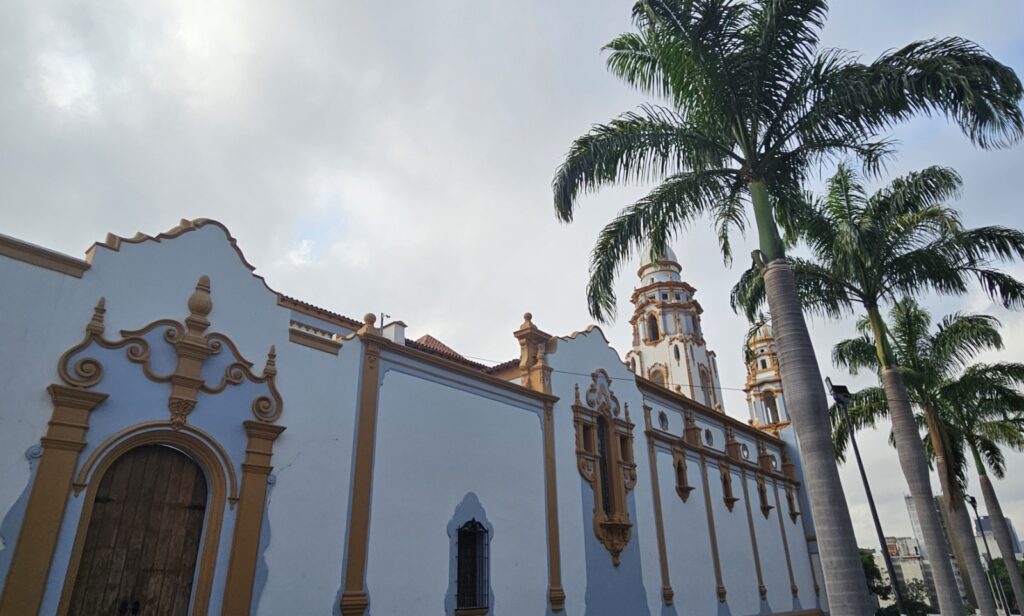
Originally it was a church, but former President Antonio Guzmán Blanco turned it into a pantheon. And later, Hugo Chávez added a very impressive new building, of modern style.
We walked amongst very busy locals, in streets with a lot of political propaganda, to reach the heart of Caracas.
Plaza Bolívar
This historic square has many significant buildings, with the Caracas Cathedral (Catedral de Caracas), being the most important one.

It dates back to the 17th century and is a beautiful example of colonial architecture. From there, we walked past the birthplace of Simón Bolívar as well.
Paseo de los Próceres
We also visited the grand “Monumen to a los Próceres”, dedicated to Venezuelan heros inagurated in 1956.
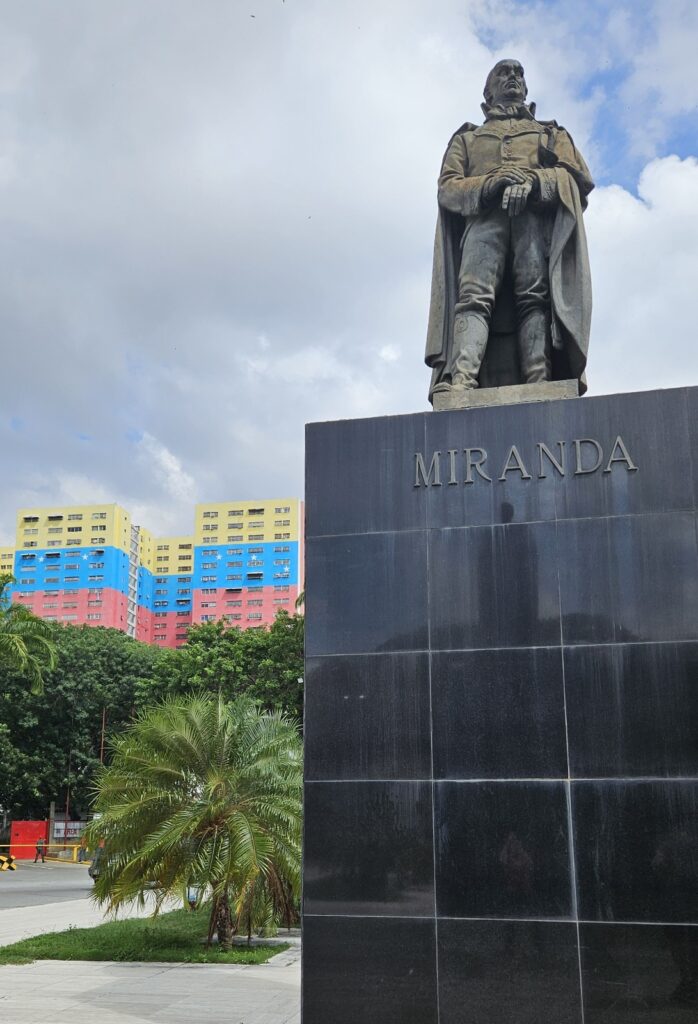
El Ávila
Officially known as Waraira Repano National Park, this mountain is a prominent natural landmark, and, on a clear day, it offers breathtaking panoramic views of Caracas on one side and the Caribbean Sea on the other.
We went up with the “Teleferico”, the cable car.
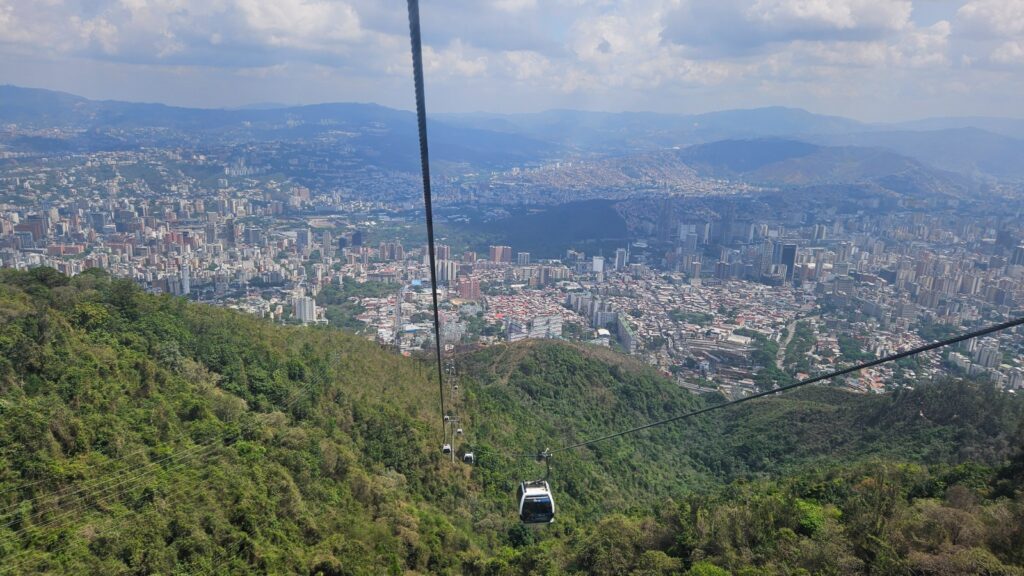
Although the ride to the top of El Ávila is a must-do activity, it was higher and longer than what I expected, and when the wind rocked the cabin, I almost panicked.
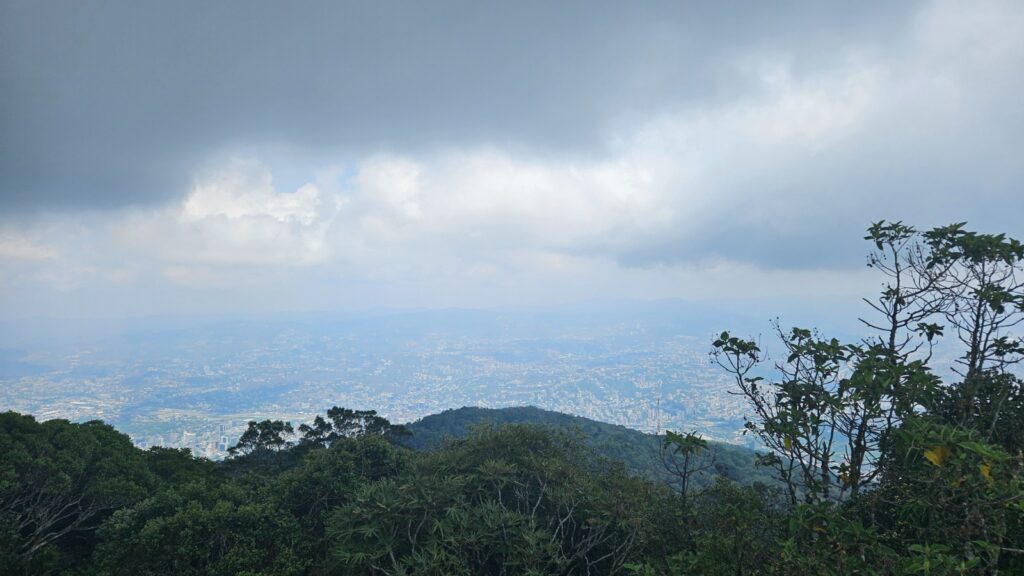
We arrived to the top, full of various amenities, including restaurants and cafes: we ate “strawberries with cream”, which is a typical treat for locals, and took pictures of the Humbolt Hotel.
This iconic hotel, located at the summit, is a marvel of mid-20th-century architecture. It has been recently renovated and offers luxury accommodations and dining with a view.
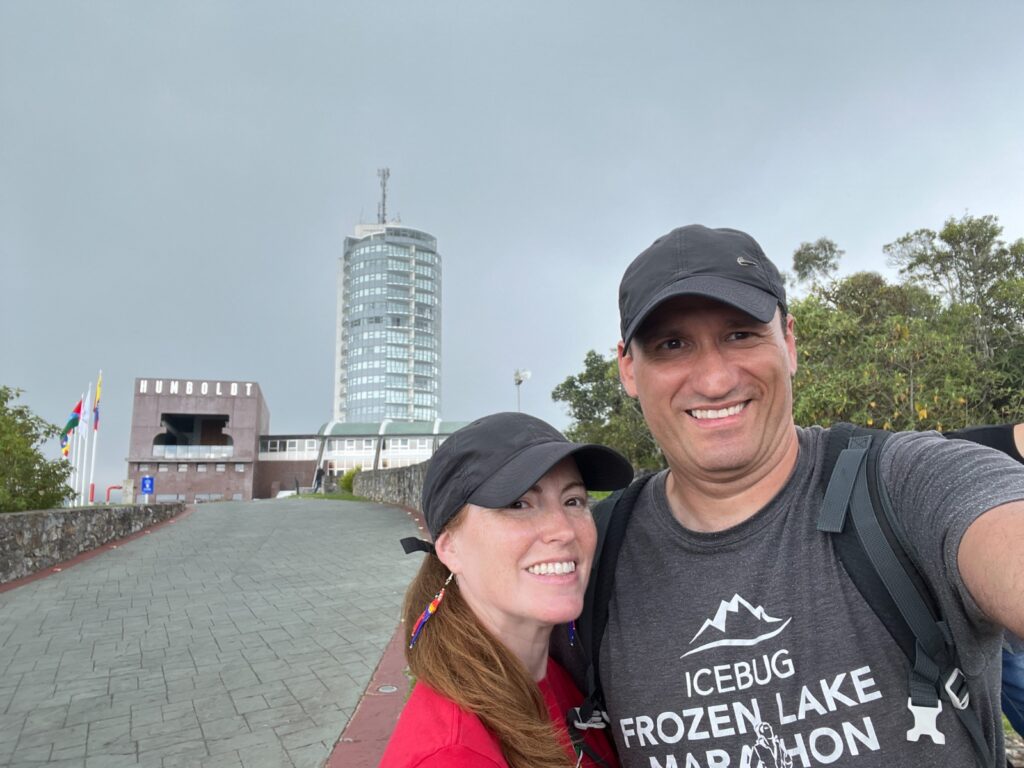
We could no enter, though, as you need to pay!
🏃♀️ The run 🏃♂️
Reaching the Parque
We leave our hotel, located in Altamira, a very well-off and safe neighborhood.
This area is where most banks are located, and our hotel is next to the CAF (Development Bank for Latin America and the Caribbean), with its customary country flags and an amazing tree next to it:

These are the little details that remind me that I am in a city very different from Barcelona 🙂
The big buildings make a very strange financial district as they are not very modern, so it looks more like having gone back to the 80s.
But I liked having El Ávila in the background. This big mountain, which I include as a landmark to see in the “Trip” section, offers a beautiful background to the city.
The streets are wide enough and the area is flat, but the traffic is super chaotic and loud. You need to watch out for cars or motorcycles, including the new “mototaxis”, which are a new thing and many drivers are not very careful…
The Parque del Este
After a kilometer and a half we arrive at our destination: the Parque Generalísimo Francisco de Miranda, also known as Parque del Este.

The park is one of the biggest and most important in the city. And it is one of the best to run as it has a “running belt”, has a total of 64 hectares of surface.

The Park is free and well kept. It has a big variety of vegetation, not only the tropical palm trees. In this blog you can find tons of information about it (in Spanish, though).

My only ‘let down’ was that the grass was super dry, as opposed to the lush greens of Parque Simón Bolívar in Bogotá. Later we would ask our guide and he told us that it was due to the date: May is the end of the summer, the dry season.
The “cinta para trotar” (running belt)
We start running in the “running belt”: in some areas it is made of concrete, in some others, earth. It is wide and not hilly.
We reach the “Independencia” bridge, decorated with big flags which flutter as it is quite a windy day. The bridge connects the park to the Bolívar one, but we stick to our route which is to run around the Parque del Este.
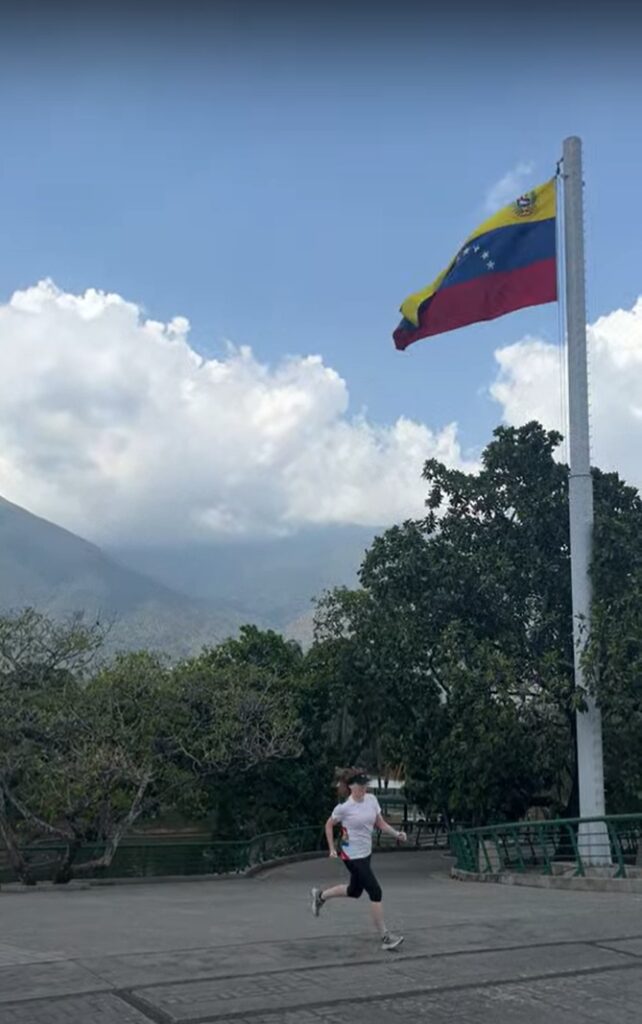
Another good thing about the route is that you find a big variety of attractions. Some of them are unusual, like finding in the middle of a “boat lake” a big ship!
It’s a replica of the “Leander” corvette used by Francisco de Miranda during his first expedition to Venezuela in 1806.
Later, I read that for many years, one of the attractions of Parque del Este was Christopher Columbus’ caravel, a replica of the Nao Santa María, which was built in Barcelona in 1967!
The Nao Santa María operated until 200819 when by decree of the National Executive of President Hugo Chávez it was dismantled to make way for the “Leander”.
We keep seeing some other nice areas of the park, like a xerophile garden; that is, a garden of plants specifically adapted for life in a dry environment.
Or a refreshing “water curtain”:
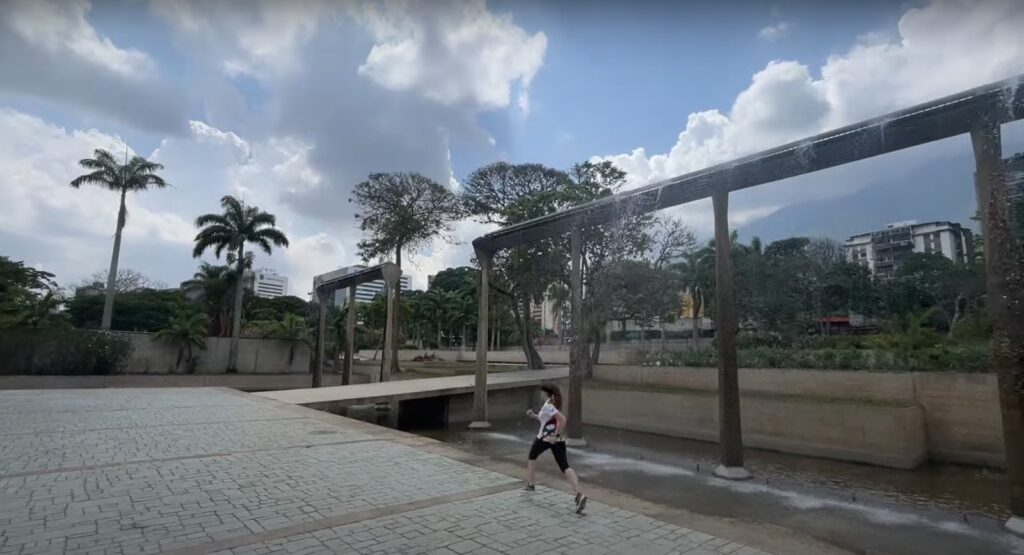
We also pass by the Humboldt, attached to the National Navy of Venezuela: which explains why we see groups of impeccably dressed young navy cadets in khaki pants and white shirts.
And finally we return to our hotel after zigzagging between colorful buses with their doors open, mototaxis and drivers who like to use their car horns.

🍜 Carboloading 🍝: What to eat in Caracas if you are a runner
There are plenty of options both for before and after your run in Caracas.
Before running we opted for the quintaessential Venezuelan dish, Arepas.
Some facts about them:
- Variety: In Venezuela, arepas are incredibly diverse in terms of fillings and preparations.
- Fillings: Common fillings include cheese, shredded meat (like beef or chicken), black beans, and avocado. One famous Venezuelan arepa is the “Reina Pepiada,” filled with a mixture of avocado and chicken salad.
- Consumption: Arepas are a staple in Venezuelan households often serving as breakfast, lunch, dinner, or even a snack.
And what’s important: Arepas provide plenty of carbohydrates, which are essential for storing glycogen.
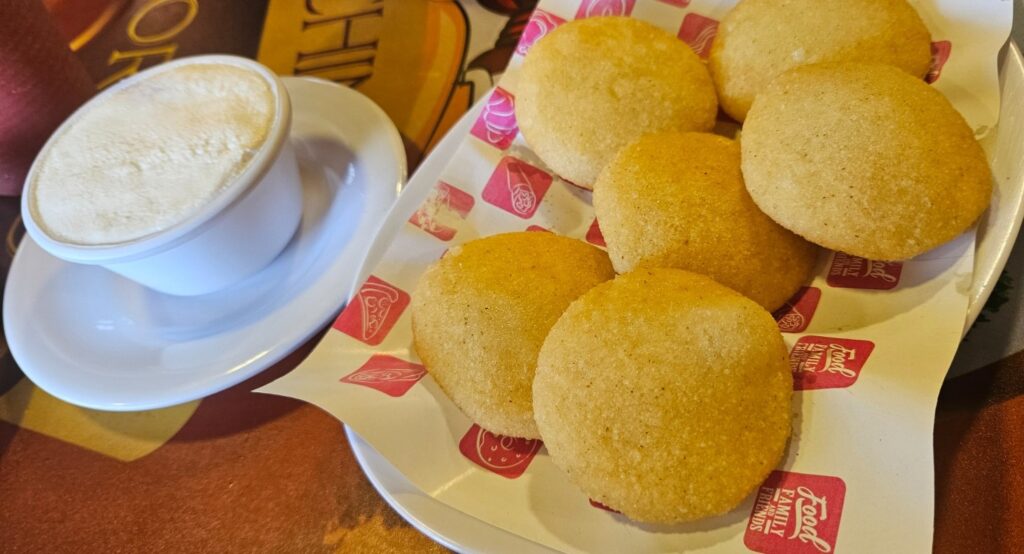
For protein recovery, we found a restaurant next to Parque del Este specialised in “cochino” and “cochinillo”; that is, pig and suckling pig.
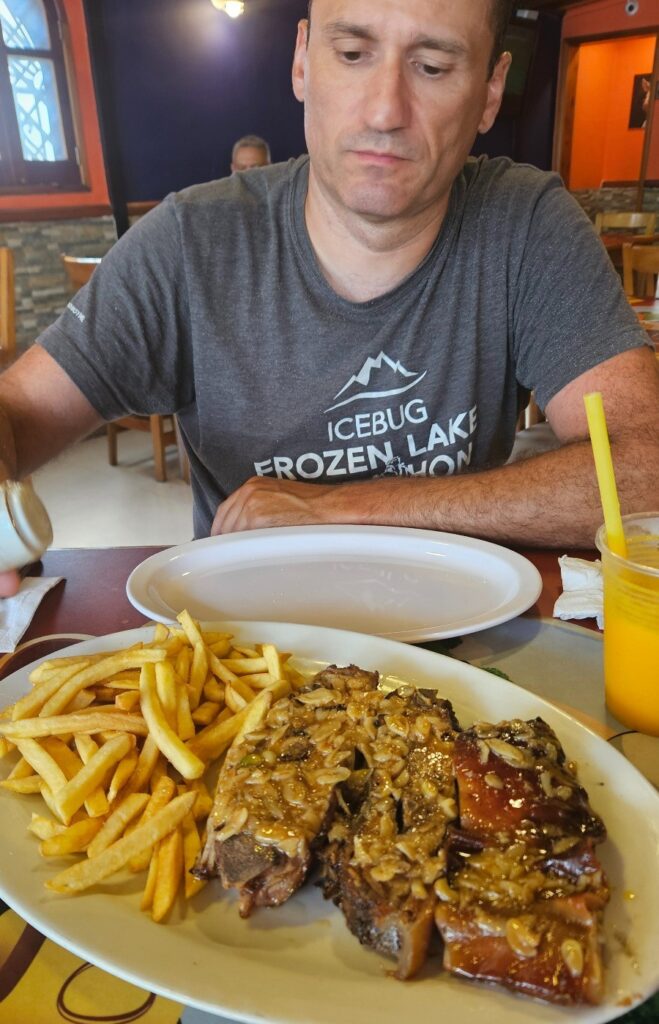
And if you want a treat, after your run, you can opt for eating “Fresas con crema” (the strawberries with cream which we all love): they are to be found in El Ávila.
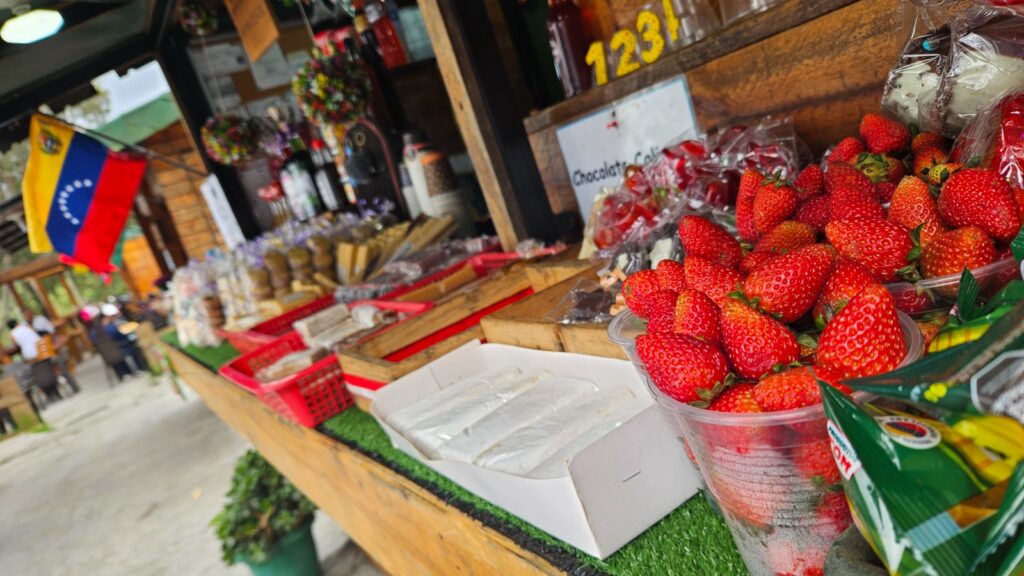

Useful information
🏆 5k Run to and in the Parque Generalísimo Francisco de Miranda, also known as Parque del Este, in Caracas, Venezuela – South America.
👟 Urban: bring shoes for asphalt / pavement. Most of the belt is made out of concrete.
✅ In the belt, good track, meant for runners: wide, surrounded by vegetation.
✅ Mixing with the locals, who use this park as a sports haven, and seeing all kind of attractions, like a boat lake, different gardens and a lot of Venezuelan flags, XXL size.
❌ The traffic in the surrounding area, and the climate: we are in the Caribbean. Although, good news: it is not as hot as the coast because Caracas has a microclimate due to being in a Valley.

Map

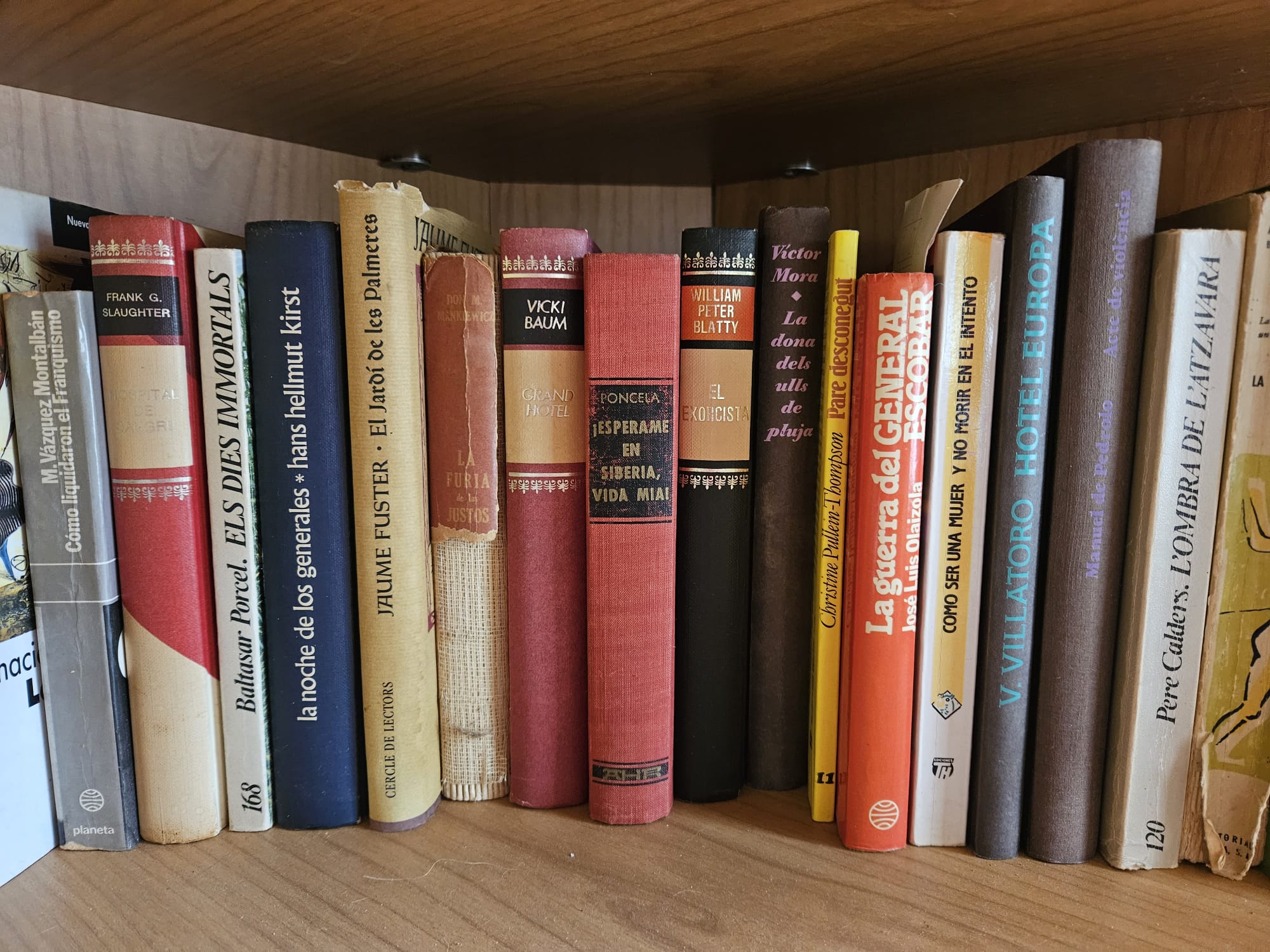
One book
“Latidos de Caracas”, by Gisela Kozak Rovero
The novel “Latidos de Caracas”, written by Gisela Kozak Rovero, which was a finalist in the “Miguel Otero Silva” Novel Prize (1999) under the title Rapsodia as the Alfaguara edition is a love story that takes place in the city of Caracas.

Plot Summary: The love story between Andrés, a nineteen-year-old student of Arts of the Central University of Venezuela who is a cinephile, and Sarracena, an architect ten years older than him
They meet in a talk about the city given by Enrique, a gay arts professor. friend of Saracena. From that moment on, the two begin a sexual relationship. both.
It all begins like this, however, as the narrative unfolds; the lovers meddle in another course: love – which, although universal – for the chronological moment of history 1990s is considered cheesy. The narration of Kozak is made quite light, the typical places of the areas best known to all ordinary Caracas residents.



